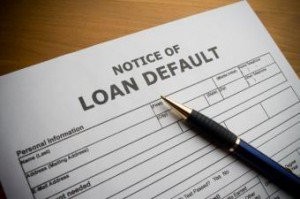 With the latest foreclosure levels (November) returning to a decline after an unusual spike in October, it is only natural that the mortgage default rate stayed consistent with the month before as well as decreased from the year prior according to the November S&P/Experian Consumer Credit Default Indices report, measured by changes in consumer credit defaults.
With the latest foreclosure levels (November) returning to a decline after an unusual spike in October, it is only natural that the mortgage default rate stayed consistent with the month before as well as decreased from the year prior according to the November S&P/Experian Consumer Credit Default Indices report, measured by changes in consumer credit defaults.
Specifically, the first mortgage default rate stayed at a steady 0.70, consistent with the month prior. Compared to data from the previous year, this rate decreased by 12 basis points.
“Recent data paint a picture of a strong economy, and lower consumer credit defaults reflect this,” says David M. Blitzer, Managing Director and Chairman of the Index Committee at S&P Dow Jones Indices. “Default rates are modestly lower than a year ago, even as continued strength in home sales, auto sales, and retail sales are supporting expanded use of consumer credit. Money market rates rose after Election Day, the Fed raised the target range for the Fed funds rate last week, and has indicated that further increases lie ahead. The favorable default trends are likely to be tested in 2017 as interest rates rise.”
According to the report, three of the five major cities experienced a decrease in default rates during the month of November. Particularly, Dallas had the largest decrease (10 basis point from the month prior) landing at 0.66 percent. The report also indicates that New York saw a default rate decline of two basis points to 0.91 percent and Chicago saw a one basis point drop to 0.96 percent from the previous month.
In contrast, the report indicated that Miami’s default rate spiked to 1.44 percent. This was an increase of 38 basis points, setting a 12-month high and, according to the report, is unmatched in Miami since January 2013.
“Among the five cities regularly tracked in this report, Miami has consistently shown the highest default rate,” says Blitzer. “One factor may be that home prices rising in Miami and mortgages are the largest portion of the city composite rate. While Dallas home prices are rising faster than Miami, Dallas prices fell far less in the housing bust and have rebounded to new all-time highs. Miami home prices remain more than 20 percent below the highs set in 2006.”
To read the full November S&P/Experian Consumer Credit Default Indices report, click HERE.

 DSNews The homepage of the servicing industry
DSNews The homepage of the servicing industry









